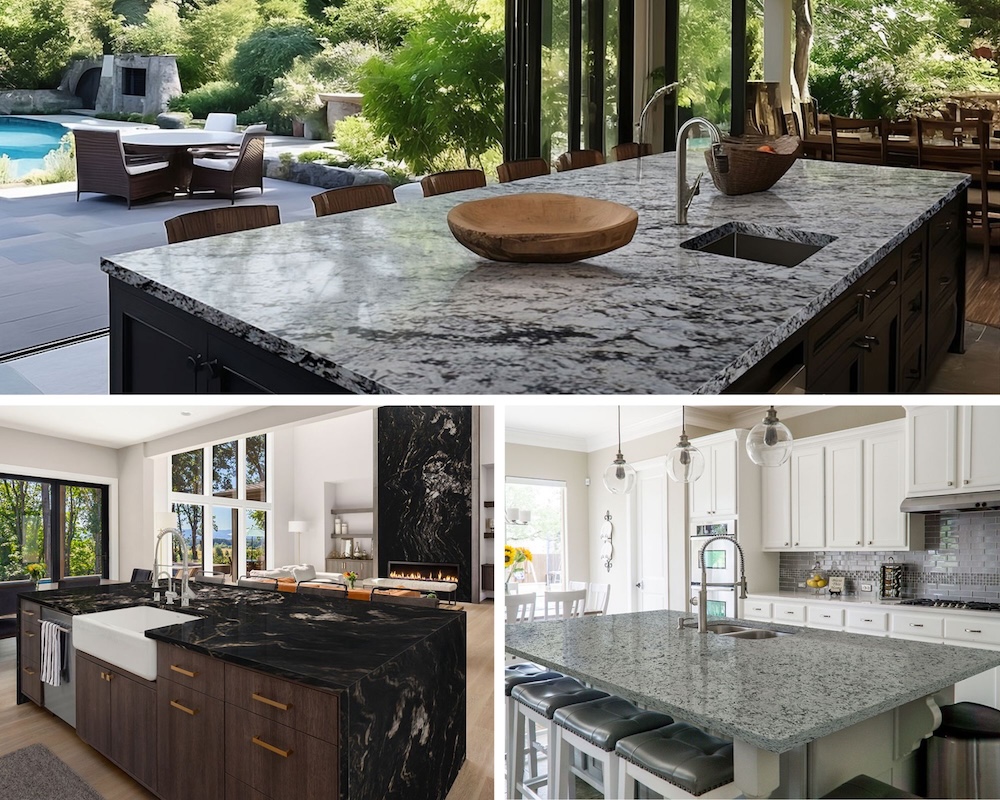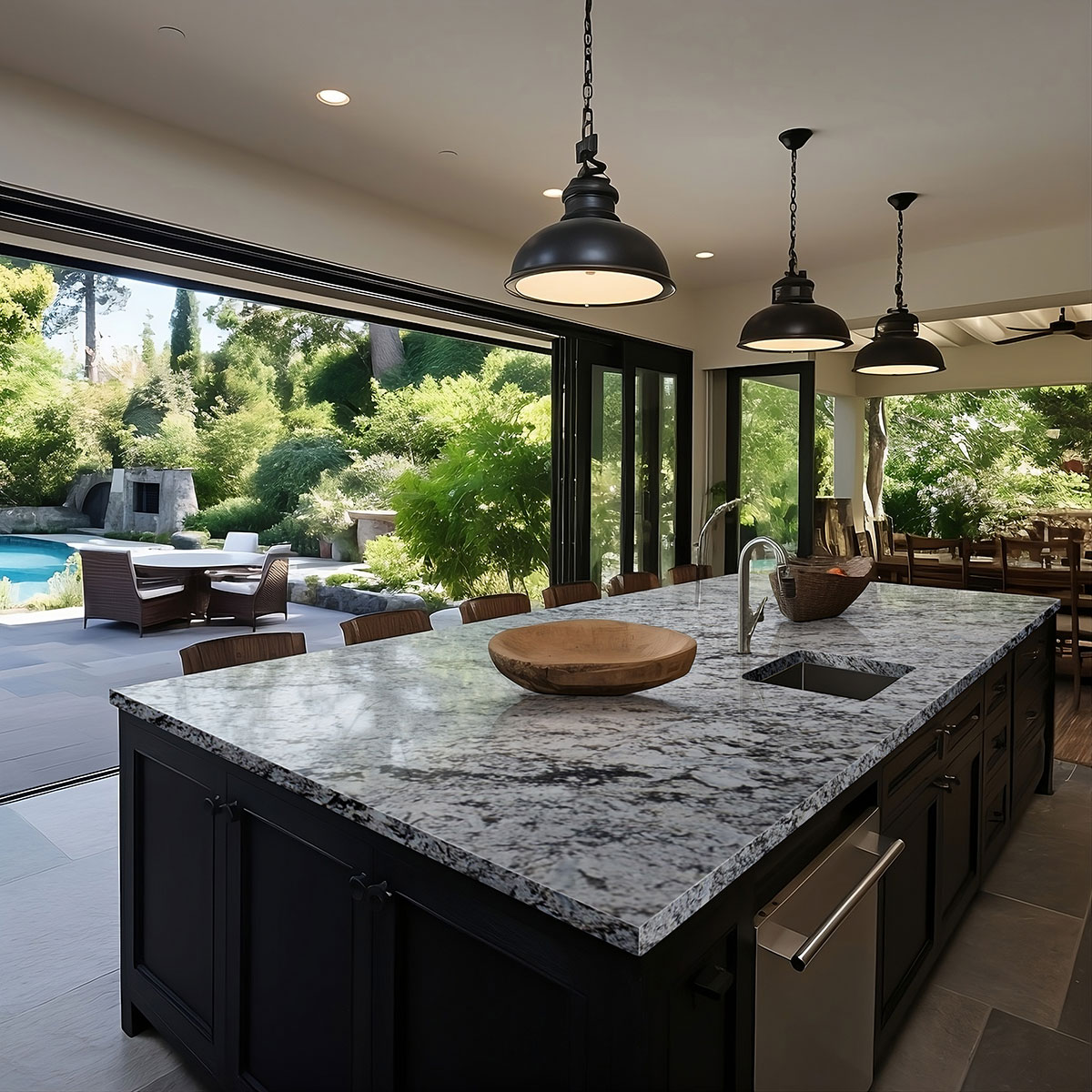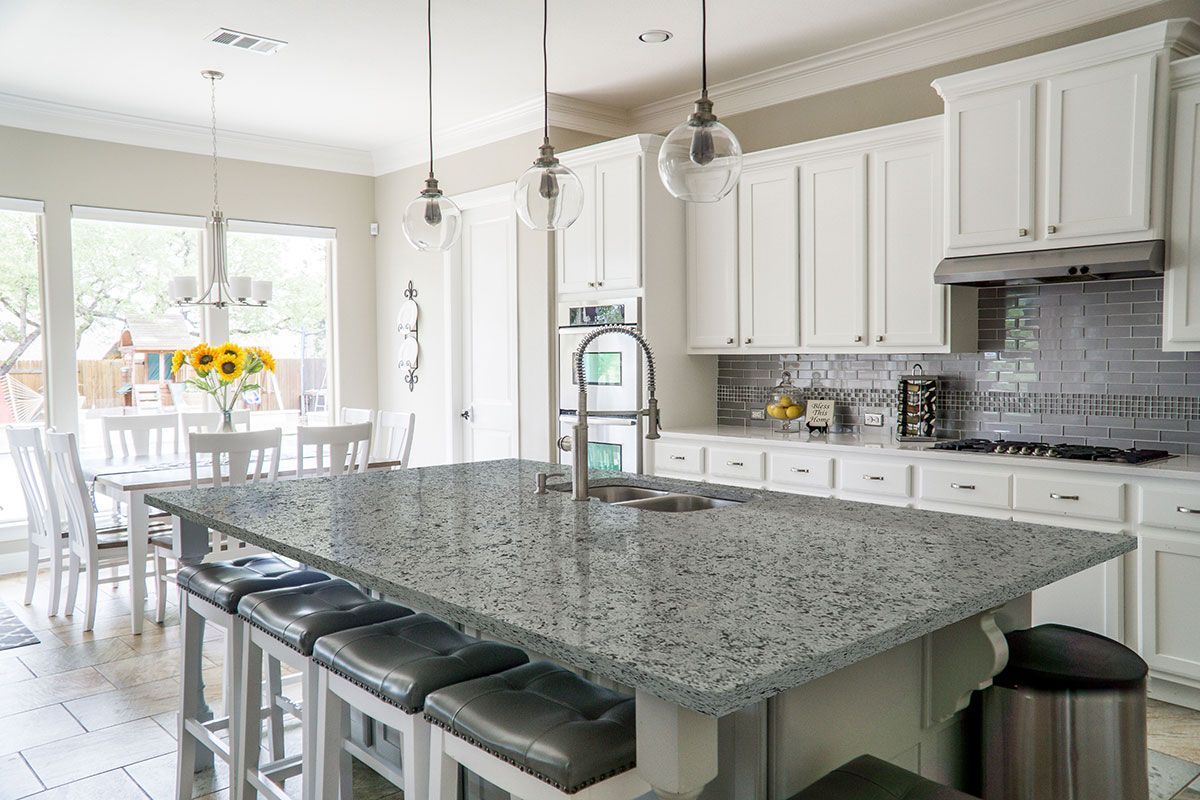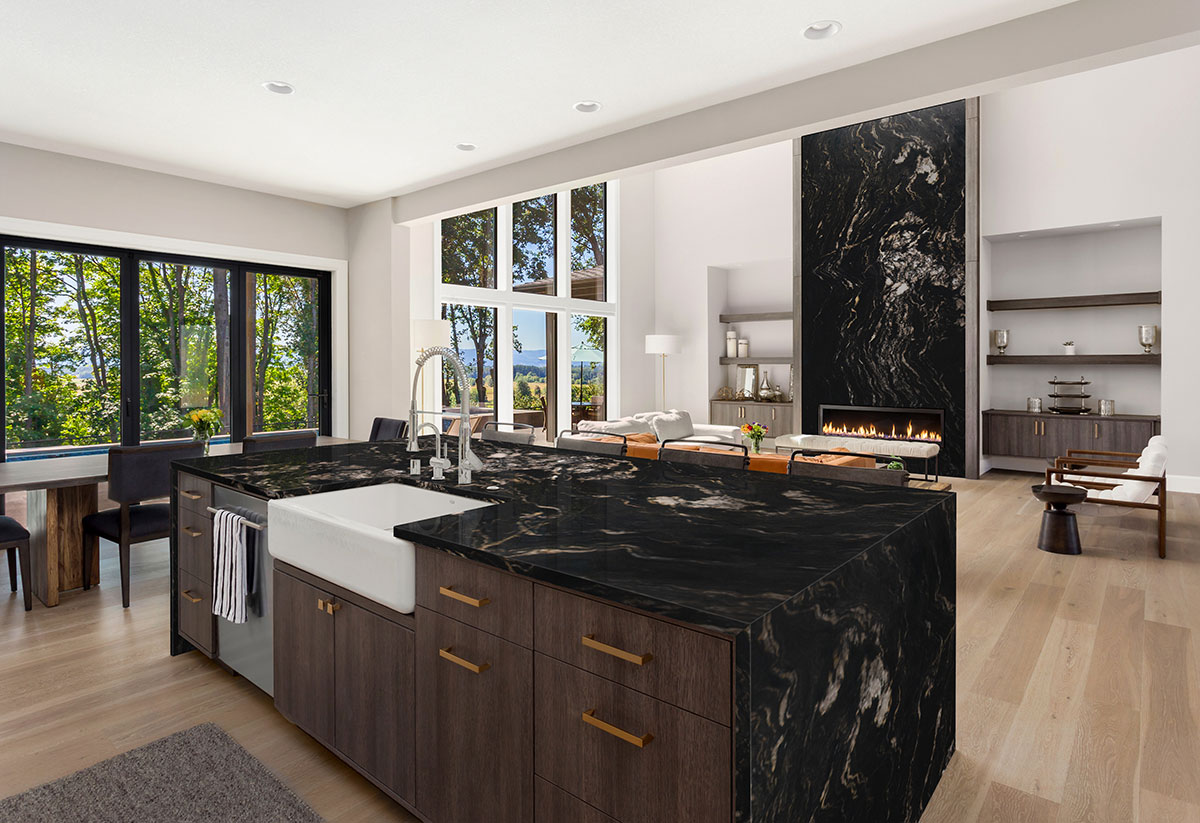Polished Vs. Honed Vs. Leathered Granite: Which Finish Is Right For You?
February 06, 2025
Granite has been admired and used in sculptural and architectural designs for thousands of years, from ancient monuments to modern-day masterpieces. Its timeless appeal, exceptional durability, and natural strength have made it a favorite material throughout the ages. Today, homeowners continue to gravitate toward granite, especially for kitchen and bathroom countertops, where it offers both functional performance and visual impact. A granite countertop can instantly elevate the look of a space, depending on the color and finish you choose.
But selecting a finish is about more than aesthetics; it also affects how the surface feels to the touch, how easily it can be cleaned, how it resists stains or scratches, and even how long it will maintain its original beauty. Understanding the differences between finishes is essential for making the right choice for your lifestyle and design goals. Let’s take a closer look at the three most popular granite slab finishes: polished, honed, and leathered.
Types of Granite Finishes
To achieve the desired finish, the granite slab first undergoes a finishing process. It moves along an automated conveyor system through different stages, where tools such as polishing wheels, diamond head brushes, and water jets are employed to craft the final appearance. The specific stage at which the stone is paused determines the type of finish achieved.
Polished Granite Finish
A polished finish is the most common choice for granite kitchen countertops in design. It has a shiny, smooth surface that enhances the color, depth, and unique features of the granite. The glossy, mirror-like appearance is achieved by buffing the stone with fine polishing pads, which also makes the stone look slightly darker and more vibrant in tone.
Honed Granite Finish
A honed finish is becoming increasingly popular, especially for modern spaces. It offers a smooth, high-quality surface free of bumps but lacks the shiny reflection of polished finishes. Granite achieves its satin or matte appearance when the finishing process ends before buffing, and darker granite shades tend to appear lighter or more gray.
Leathered Granite Finish
A leathered finish is an emerging trend in the design industry. It has a soft sheen, less shiny than polished granite, combined with a textured look. This subtle, dimpled surface is created by running diamond-tipped brushes over honed granite. Although it mostly preserves the stone's natural color, it is more often found on darker stones.
Flamed Granite Finish
A flamed finish is a striking and highly textured option created by exposing the granite surface to intense heat, typically using a high-temperature torch. The sudden heat causes the surface crystals to burst and become rough, resulting in a rugged, natural texture with a slightly faded or muted color.
Granite Care and Maintenance
Granite is well-known for being one of the strongest natural materials. The finish chosen can affect the care and lifespan of the granite countertop. Since it is a natural stone, it does require continual maintenance like sealing to keep it looking its best and performing for years to come.
Caring for a Polished Finish
The shiny polished finish makes cleaning granite easier because more pores are sealed than with any other finish. It helps not only resist stains and keep bacteria at bay, but it also repels water and moisture better, too. Another plus from picking a polished finish is that it doesn’t require resealing as often because the surface isn’t as porous when compared to other finishes, and its shine will stay that way for a long time.
Caring for a Honed Finish
Even though honed granite slabs have a smooth finish, it does require a bit more care and maintenance. Because it is more porous than a polished version, the surface might be more susceptible to stains, dark spots, and discoloration from food or drink spills. Anything acidic might even etch the surface. This type of finish will require resealing more often, at least annually if not every few months, so that spills or water won’t absorb into the stone. Also, fingerprints, grease, and dust are much more visible on a honed surface, so a daily wipe down using a damp cloth and then thoroughly drying the countertop will help get rid of water spots and other visible messes.
Caring for a Leathered Finish
A leathered surface is lower maintenance and doesn’t require as much cleanup all the time. Because of its textured nature, it does a good job at hiding fingerprints, smudges, water spots, and even crumbs. When compared to a honed finish, it does offer more stain resistance. But if it gets damaged, it may be more difficult to replicate the finish, so a larger area or even the whole kitchen countertop might require refinishing.
Caring for a Flamed Finish
Flamed granite has a coarse, textured surface that makes it excellent for outdoor or high-traffic areas, but it does require a bit more attention when it comes to cleaning. The rough finish can trap dirt, dust, and spills more easily than smoother surfaces, so regular sweeping and wiping with a soft brush or cloth is essential. Because it's more porous, sealing is important to protect against stains and moisture, especially if the stone is used in kitchens or bathrooms. Use a penetrating sealer designed for textured stone and reapply it as recommended, typically once a year. Avoid abrasive cleaners that can damage the stone or erode the sealant, and instead opt for pH-balanced stone cleaners to preserve its rugged beauty.
Determining the Right Finish
Choosing the finish for a new granite countertop depends on the desired look and its impact on the richness of the color. It’s also important to consider the maintenance requirements based on your lifestyle. Not all granite colors can be finished in a honed or leather style, as the mineral content may compromise the slab's integrity.
Polished granite counters are attractive, practical, and elegant. They are especially durable, making them ideal for those who love to cook, as the surface resists stains, scratches, and heat. A large island with a polished finish can become a stylish dining area or a gathering spot for parties. Honed and leathered finishes are increasingly popular for darker shades. While both are durable options, there's ongoing debate about which is superior.
Honed granite offers a subtler look but may stain more easily. Leathered granite provides a textured appearance and feel, and some suggest it might be easier to maintain than honed versions. It’s advisable to see and feel samples in person, especially when choosing between these textures, since they are quite different.
Each finish has its advantages and disadvantages. A renovation for a forever home might prioritize different features than a quick flip aiming for a modern update. Ultimately, granite countertop slabs remain a high-performance natural stone regardless of the finish. Choose the one that best complements your kitchen or bathroom style and design.
As you can see, granite countertops offer a wide range of benefits that make them a popular choice for kitchens and bathrooms alike. With a variety of finishes—like polished, honed, leathered, and flamed—you can choose the look and feel that best suits your style and lifestyle needs. While granite may not be the perfect fit for every space, its durability, natural beauty, and finish options make it a standout surface. To learn "where to buy countertops near me", chat online with one of our knowledgeable representatives, visit an MSI showroom, or find an authorized dealer near you.
Read More about Granite Countertops
Bold and Beautiful Granite Colors
Comparing Marble And Granite Countertops
Different Types Of Finishes For Granite Countertops
Does Luxury Vinyl Flooring Go Well with A Granite Countertop?
 Lennon Granite
Lennon Granite White Napoli Granite
White Napoli Granite Titanium Granite
Titanium Granite